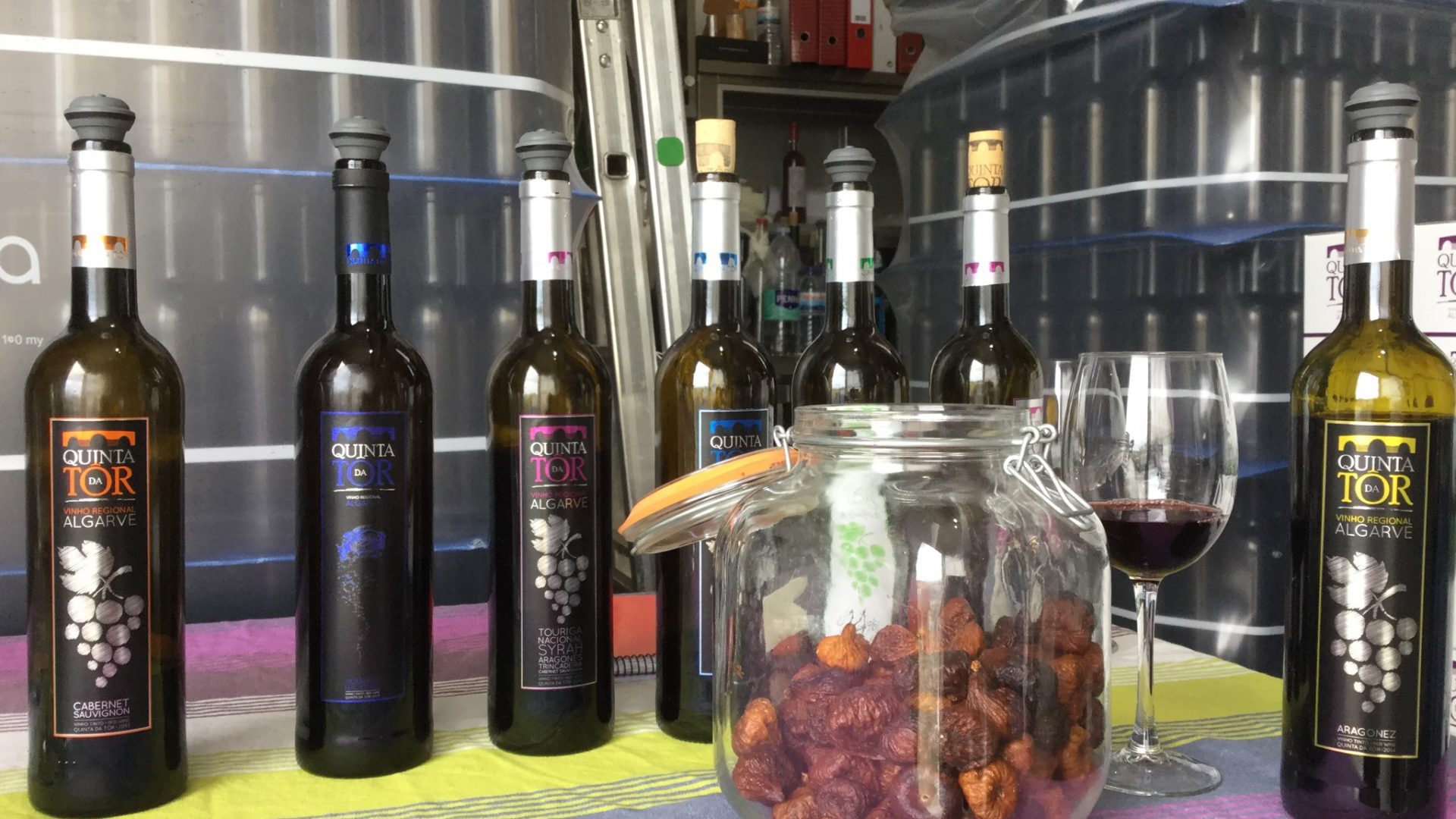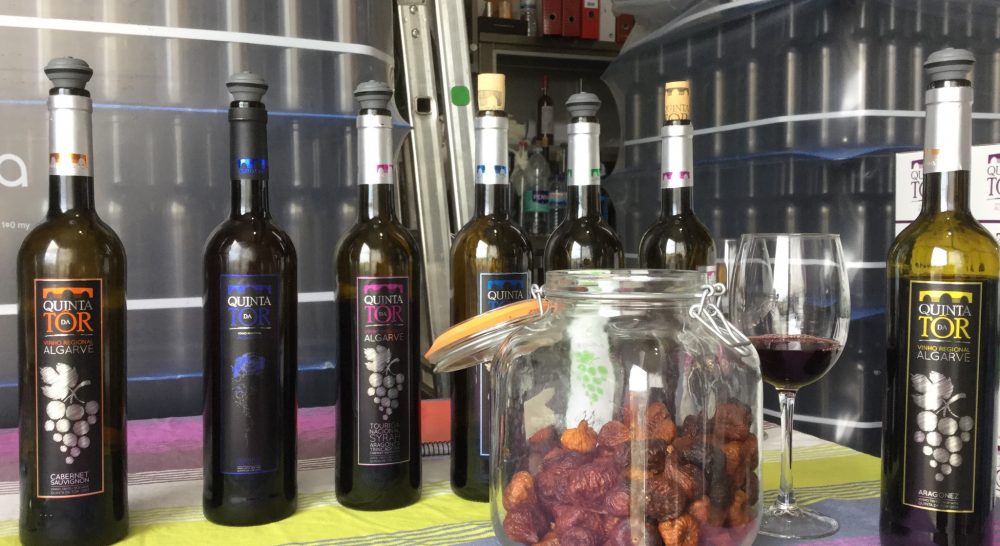DISCOVERING THE WINES OF THE ALGARVE
Taking a wine tour….
My friend Nuno and I thought it was about time we took ourselves on a wine tour to discover the delights of wine from the renowned Quinta da Tor vineyard. To be honest it didn’t take much persuading!
The Quinta da Tor is a family business which was taken over by Senor Mareo in 2011. They started producing their own wine in 2013 and now have many different types of red wine including an exceptional new Rosé. Next year will see the vineyard producing white wine for the very first time.
On arrival, we were greeted by Senor Mareo who was waiting to talk to us about the joys of his beautiful vineyard, set in a micro climate valley producing various different grapes.
The production area can be found in a large warehouse which was spotless and here we could see many stainless-steel vats with different wines in production.
Once the grapes are picked they are hand selected and then graded by a machine as to their suitability and quality.
The first process takes a few weeks and then the grapes move to the second phase where they are transferred to the bigger vats. Those that are due to go into the oak caskets are finally moved where they will stay for several years to mature and reach different strengths.
The casks last for six wine producing sessions and then they are sold as ornaments as they are no longer sufficiently airtight. This means that the flavour from the new casks is different to the flavour of the grapes kept in the older casks. These beautiful casks are maintained at a very low temperature as the rear of the cellar is kept underground all year round.
The first reserve wine is delicious particularly when tasting straight from the barrel but at eleven in the morning it was a bit of a shock to the system. Nuno, the professional, sipped smelt and spat out! Whilst I embraced the more English and Irish version of wine tasting, sucked in the air, swivelled the wine in the glass to get the nose and drank the contents!
There is also a difference in quality between the wine from the older casks and the new ones for the reserve wines. The wines are grown, picked, selected, fermented, produced into vats and casks and then bottled and packaged into a beautiful case containing six bottles.
It was a fascinating experience visiting this hard-working family institution which provides the Central Algarve with an exclusive product within the wine industry.
If you love sampling the local wines whilst on holiday, why not book your own wine experience evening with Nuno where you can have a private tasting from the comfort of your own villa terrace.
Nunowineexperiences@gmail.com 00 351 919 517 971
NovaCortica
Did you know that Portugal produces more than 50% of the world’s Cork, more than 100,000 tons of cork are produced annually by Portuguese cork trees and it takes more than 40 years to get a good quality cork to produce a wine bottle stopper?
I recently visited the cork factory another family run business that started in 1935 and is located near Sao Bras de Alportel. This factory produces cork stoppers and discs and granules for some of the best sparkling wines, champagnes and wines in the world.
There are a few other cork factories in Portugal which produce other items such as handbags, belts, wallets and material for cork fabric to cover armchairs and sofas. These factories get their raw supply from NovaCortica.
It takes 25 years for the young tree to grow before it can be harvested for the first time so as a virgin tree the cork is not of the best quality and is mainly used for flooring and insulation. The second harvest can take place nine years later after the tree has had time to regenerate and this cork is more dense and better quality.
Another nine years on and the tree can be harvested again, this time producing a far superior quality, with the tree now being 43 years old! Lines in the cork indicate its age and it always grows inside to outside. The quality is measured by the eye and the older cork is generally more expensive.
The trees can be harvested about 20 times and would eventually be an amazing 250-300 years old. All harvesting is performed in the traditional way – by hand and knife during the summer months in the main areas including Loule, Alentejo, Sao Bras and Monchique.
Initially, when reaching the factory, the cork is boiled for an hour reaching 100 degrees and pressed. Cork has a great elastic property which makes it subtle and easy to manipulate but it also has an elastic memory and therefore tries to regain its original shape. This is why it’s almost impossible to return the stopper to the bottle after it has been opened! Of course, this isn’t always necessary anyway…!
Wine can stay in the bottle for many years, therefore the stoppers need to be good quality, particularly for the more expensive wines and champagne. They are graded into six different types, some being made from compressed granules, some granules and cork discs better known as technical stoppers and some punched out of a piece of cork!
Champagne corks are originally made in a stubby sausage shape from granules and two pure cork discs to ensure no air escapes, then forced into the bottle with pressure and the cork stopper is capsulated. Every piece of the cork is used in some form or another. There are 40,000 discs per sack and one million discs are produced on a daily basis which amounts to 25 bags per day. It’s amazing to think how much goes in to producing this essential part of a champagne bottle!
My visit to the cork factory was very educational and a wonderful insight into such a versatile product. I would recommend a visit next time you’re on the Algarve.
Contact via turismo@novacortica.pt Telephone: 351 289 840 150






